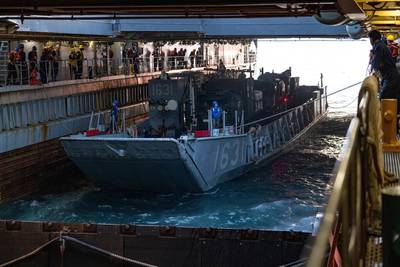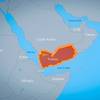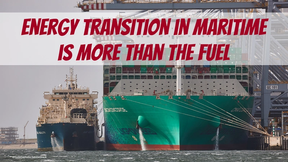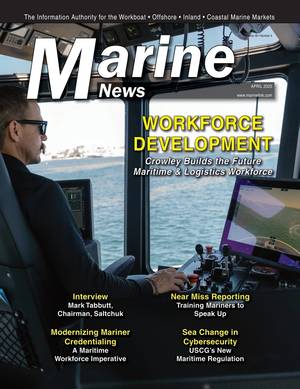America's Sea Services Building Large Fleet of Small Ships and Craft
Not every vessel in the U.S. Navy is built for major combat operations on the high seas. There are large numbers of boats and service craft that provide essential services to the sea services, the nation and its partners.
The U.S. Navy procures about 100 small boats per year. Some of these boats are based on commercial designs, procured to a Navy developed specification that tailors the requirements to the end user needs. They are procured and managed by two Naval Sea Systems Command program offices—PMS 300 and PMS 325.
Compared to warships and auxiliaries, the boats are small, but are made by a large number of boat builders across the country. For 2023, the most active contracts include: -40 Foot Patrol Boat (built by Metal Shark in Louisiana) -Harbor Security Boats (built by Metal Shark in Louisiana) -11 Meter Naval Special Warfare (NSW) Surface Support Craft (SSC) (built by Silver Ships in Alabama) -Oil Spill Response (OSR) Utility Boat (UB) (built by Metal Craft Marine in New York) -Force Protection Small and Large (built by Metal Craft Marine in New York) -11 Meter USMC Assault Amphibian Safety Boats (AASB’s) (built by Silver Ships in Alabama) -11 Meter Expeditionary RIB (built by RIBCRAFT in Massachusetts) -Workboat Large (built by Snow in Washington) -7 Meter and 11 Meter Shipboard Rigid Inflatable Boats (RIBS) (built by RIBCRAFT in Massachusetts) -Force Protection Medium (FPM) (built by Lake Assault Boats in Wisconsin) |
While not flashy, service craft play a vital role for the Navy.
Tiara N. Robinson, a public affairs specialist with Naval Sea Systems Command in Washington, said NAVSEA has active contracts for two types of berthing and messing barges. "The larger of the two is the Auxiliary Personnel Lighter (APL) which is being built by Bollinger Mississippi Shipbuilding (formerly VT Halter) in Mississippi. The smaller of the two is the Yard Repair Berthing and Messing (YRBM) barge which is being built by Conrad Shipyard LLC in Louisiana. These berthing and messing barges are bringing significant quality of life improvements for sailors as they augment and replace older barges."
Robinson said that NAVSEA has a contract with Austal USA in Alabama to build an Auxiliary Floating Drydock Medium (AFDM) that will be used on west coast surface ship maintenance availabilities. In April 2023, NAVSEA awarded a fuel oil barge (YON) contract to Sterling Shipyard in Port Neches, Texas, that will provide for up to six barges that provide fuel storage and supply at designated Naval Bases.
The Navy is working with the National Oceanic and Atmospheric Administration (NOAA) to acquire two new research ships for NOAA's ocean exploration and scientific research missions. The 244-foot ships, which will be named Oceanographer and Discoverer, are being built by Thoma-Sea Marine Constructors LLC in Houma, La.
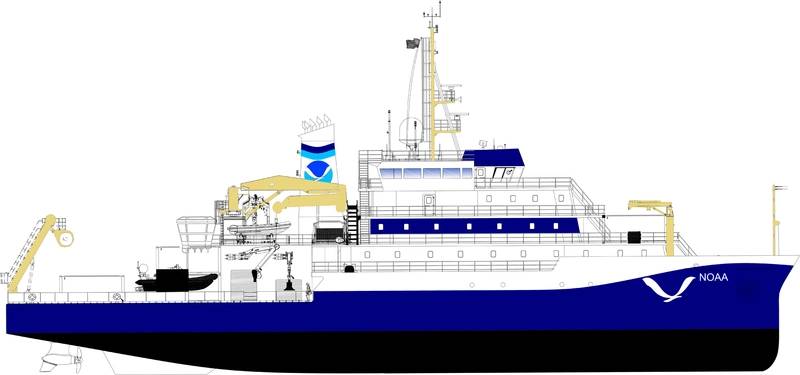 Illustration of NOAA oceanographic research vessel Oceanographer. (IMAGE: NOAA)
Illustration of NOAA oceanographic research vessel Oceanographer. (IMAGE: NOAA)
Expeditionary craft
Getting material, personnel and vehicles from expeditionary sea basing ships and the shore is a job for ship-to-shore landing craft. Currently that mission is conducted primarily with "landing craft, utility" (LCUs) and landing craft air cushion (LCAC) vessels. Both classes are old, and there are replacement programs underway.
According to Robinson, the Ship to Shore Connector (SSC) is a one-for-one replacement for the legacy LCACs. The prime contractor for SSC is Textron Systems of Slidell, La. The program of record is 73 craft, one of which is a test and training craft and the other 72 are fleet assets. Currently, seven craft have been delivered (one test and training craft and six fleet assets), with 12 more in production.
The SSC program represents the first major naval acquisition program in more than 15 years to be designed “in-house” by the Navy rather than by industry partners.
"The Navy took advantage of its air cushion vehicle expertise to produce a contract-level design for SSC, which was then completed by the shipbuilder," she said. "The ‘in house’ design enabled the Navy to capture lessons learned from the existing LCACs and expanded the potential pool of bidders to ensure full and open competition."
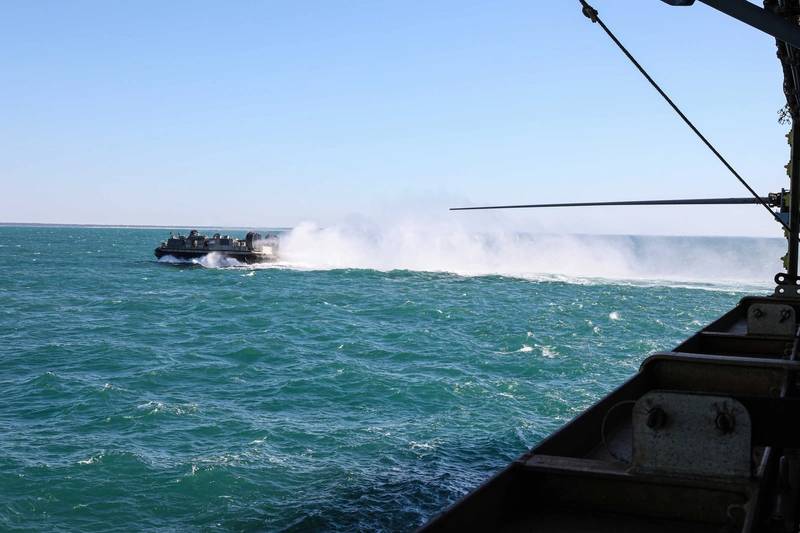 A landing craft, air cushion (LCAC) deploys from the amphibious dock landing ship USS Carter Hall (LSD 50) in the Atlantic Ocean. (Photo: Moises Sandoval / U.S. Navy)
A landing craft, air cushion (LCAC) deploys from the amphibious dock landing ship USS Carter Hall (LSD 50) in the Atlantic Ocean. (Photo: Moises Sandoval / U.S. Navy)
Called the LCAC 100 Class, the SSC will perform similar missions, and has similar dimensions and clearances to the LCAC, which ensures the compatibility of SSC with existing well deck equipped amphibious ships, while being designed to provide more lift, lower fuel consumption and less maintenance.
While awaiting the SSCs, the Navy conducted a service life extension program (SLEP) for the legacy LCACs. "The program involves upgrading the powertrain to provide additional power as well as decreasing fuel consumption and maintenance needs," Robinson said. "The SLEP also replaced older technologies, including upgrading command, control, communications, computer and navigation, or C4N, systems. LCAC SLEP extends the craft beyond their original 20-year service life."
While all in-service LCACs are now in the SLEP configuration, and the program is complete, a new program, the LCAC Extended Service Live Extension Program (E-SLEP) is underway at Walashek Industrial & Marine, Inc., of Norfolk, Va., with work being performed at Camp Pendleton. "The first E-SLEP craft was delivered, over a month ahead of schedule, in February 2023," Robinson said. "There are currently three E-SLEP availabilities ongoing and a contract for two more was recently awarded."
The Navy is also replacing it LCU 1650 class landing craft, utility (LCU) with the new LCU 1700 class vessels. As of last August, 32 LCUs 1700 are being built at Swift Ships of Morgan City, La. The LCU 1700 can carry two MIAI main battle tanks or 350 troops and have a 1,200 nautical mile range at 8 knots.
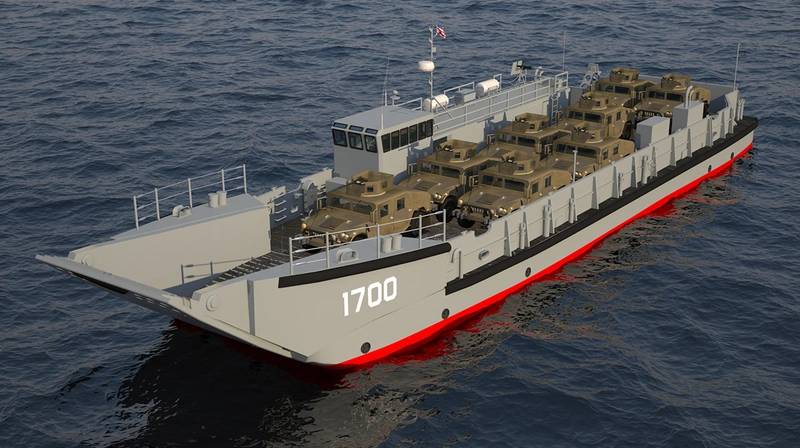 Artist's conception of the Swift Ships LCU 1700 (Image: Swift Ships)
Artist's conception of the Swift Ships LCU 1700 (Image: Swift Ships)
A new Light Amphibious Warship (LAW) is being designed to augment the Navy’s larger, multipurpose amphibious warships. LAWS will be known as the "landing ship, medium," or LSM. Five industry partners are contracted to provide concept studies, with a follow-on option for preliminary design.
"The Navy and Marine Corps have finalized requirements for the Medium Landing Ship (LSM), formerly known as LAW, and are in the process of final requirements approval of the Capabilities Development Document (CDD). The Concept Studies and Preliminary Design occurred from 2021 through 2022 and are being used to inform the requirements and ship specification," Robinson said. "The Navy intends to award a contract for the lead ship in 2025."
The Navy's floating drydock fleet is getting smaller and older. In June of last year, the Navy awarded Austal USA a $128 million detailed design and construction (DD&C) contract for a news auxiliary floating dry dock medium (AFDM) for the Navy. To replace the Navy's oceangoing towing and salvage platforms operated by Military Sealift Command, Austal USA is also building four Navajo-class Towing, Salvage, and Rescue Ships (T-ATS 11 - 14).
Coast Guard's big fleet of small boats
The U.S. Coast Guard accepted delivery of the first fifth-generation Over the Horizon (OTH V) cutter boat on April 18, which will support fast response cutter. This first boat will serve as an operational test and evaluation platform, but will be assigned to USCGC Angela McShan (WPC 1135), based in Cape May, N.J., in an operational role. The 10-year OTH V contract was awarded to Inventech Marine Solutions of Bremerton, Wash., in August 2022. The contract supports delivery of up to 194 boats and has a total value of almost $100 million.
The OTH V will be deployed across the Coast Guard fleet of national security cutters, fast response cutters, offshore patrol cutters, polar security cutters and legacy medium endurance cutters, and extends the parent cutter's capabilities and has the speed, endurance, communications and sensors to conduct missions far from the parent ship.
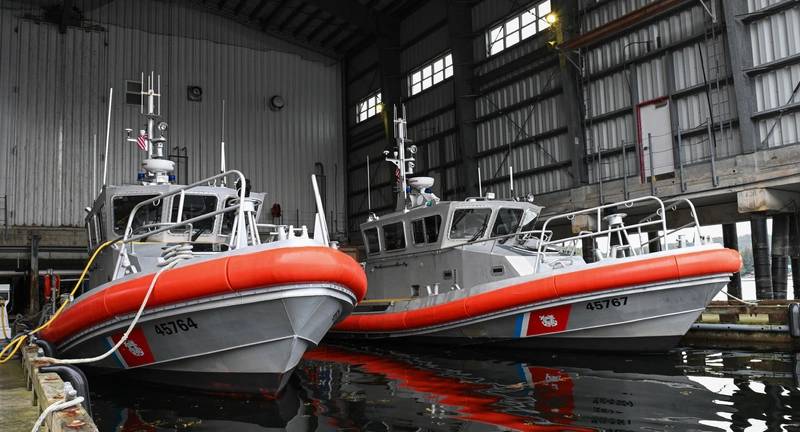 Coast Guard Station Ketchikan, Alaska is equipped with two 45-foot Response Boats-Medium (pictured and two 29-foot Response Boats-Small, used to carry out search and rescue, law enforcement and living marine resources enforcement throughout southeastern Alaska. (Photo: Ian Gray / U.S. Coast Guard)
Coast Guard Station Ketchikan, Alaska is equipped with two 45-foot Response Boats-Medium (pictured and two 29-foot Response Boats-Small, used to carry out search and rescue, law enforcement and living marine resources enforcement throughout southeastern Alaska. (Photo: Ian Gray / U.S. Coast Guard)
The Coast Guard acquired 174 RB-M 45-foot Response Boat-Mediums (RB-Ms), with the final boat was produced and delivered in 2015. The RB-M has proven effective search and rescue; ports, waterways and coastal security; law enforcement; and drug and migrant interdiction missions. The RB-Ms were built at Marinette Marine Corp. of Marinette, Wis.
The Response Boat-Small II (RB-S II) program delivered 370 of the 29-foot boats to the Coast Guard, with the final boat delivered by Metal Shark Aluminum Boats of Jeanerette, La., in 2019. The 40-knot RB-s IIs are high-speed and deployable, and designed for port and waterway security, search and rescue, drug and migrant interdiction, environmental and other law enforcement missions. The Coast Guard acquired 370 RB-S IIs at an approximate total contract value of $150 million, making it one of the largest boat buys of its type for the service.
The Coast Guard is in the process of updating its 470-foot motor lifeboats as part of a service life extension program (47’ MLB SLEP) at Birdon facilities in Washington and Connecticut. According to Coast Guard spokesman Richard Kanehl, the contract will upgrade at least 107 boats, and the project has total projected contract value of about $190 million to complete the SLEP over the 10-year contract period.
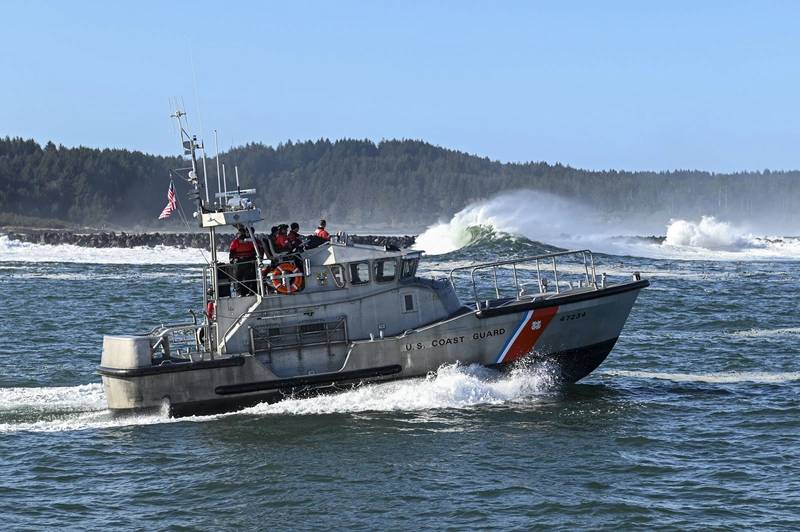 A USCG 47-foot Motor Lifeboat (Photo: U.S. Coast Guard)
A USCG 47-foot Motor Lifeboat (Photo: U.S. Coast Guard)
The Coast Guard is also in the process of replacing its aged fleet of 35 inland waterway tenders that support the aids to navigation (ATON) mission. The Waterways Commerce Cutter program is being managed with a joint program office with the Coast Guard Acquisition Directorate and NAVSEA. Denver, Colo.-based Birdon America, Inc., was awarded a contract for the detail design and construction of the river buoy and inland construction tenders. The contract includes options for the construction of a total of 16 river buoy tenders and 11 inland construction tenders. A third ship in the program, the Inland Buoy Tender, is being acquired separately. The Coast Guard is partnering with the U.S. Army Corps of Engineers Marine Design Center to develop a government-led design for the Inland Buoy Tender variant.
Foreign military sales
A significant number of boats are acquired for and transferred to allied and partner nations, particularly smaller navies and coast guard. According to Robinson, NAVSEA has over 100 active foreign military sales (FMS) cases that are delivering small boats and combatant craft to international customers.
According to Robinson some of the prominent FMS cases include the Near Coastal Patrol Vessel (NCPV) being provided to partner nations in South America. The NCPV program is a partnership with the U.S. Department of State and U.S. Southern Command (USSOUTHCOM) to support patrol operations in U.S.-allied countries in Central America, Latin America and the Caribbean. Metal Shark was is building the NCPVs for Costa Rica, the Dominican Republic, El Salvador, Guatemala and Honduras.
Rigid hull Inflatable Boats (RIBs) and patrol boats are also being provided to partner nations across the middle east, South America and Europe.
"The Navy also has smaller FMS cases that provide small boat equipment, training and life cycle support,” Robinson said.




